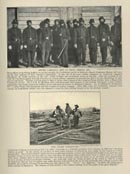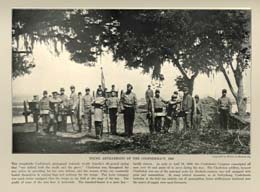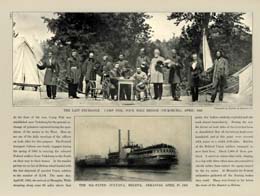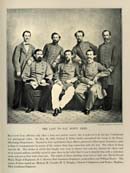Confederate Flying Artillery
![]()
This Site:
SOUTH CAROLINA MEN IN BLUE, SPRING 1861
These officers of the Flying Artillery we see here entering the Confederate service at Sullivan's Island, Charleston Harbor, still wearing the blue uniforms of their volunteer organization. It was one of the state militia companies so extensively organized throughout the South previous to the war. South Carolina was particularly active in this line. After the secession of the State the Charleston papers were full of notices for various military companies to assemble for drill or for the distribution of arms and accoutrements. Number 2 of this group is Allen J. Green, then Captain of the Columbia Flying Artillery (later a Major in the Confederate service). No. 4 is W. K. Bachman, then a 4th Lieutenant, later Captain in the German Volunteers, a state infantry organization that finally entered the artillery service and achieved renown as Bachman's Battery. No. 3 is Wilmot D. de Saussure; No. 7 is John Waites, then Lieutenant and later Captain of another company. After 1863, when the Confederate resources were waning, the Confederate soldiers were not ashamed to wear the blue clothing brought in by the blockade runners.
TWO YEARS AFTERWARD
Confederate Uniforms at Gettysburg, July 1-3, 1863.—According to a Northern authority, Lee's veterans in 1863 were "the finest infantry on earth!" In this picture we see three of them taken prisoners at Gettysburg and caught by the camera of a Union photographer. These battle-stained Confederates had no glittering uniforms to wear; they marched and fought in any garb they were fortunate enough to secure and were glad to carry with them the blankets which would enable them to snatch some rest at night. Their shoes—perhaps taken in sheer necessity from the dead on the field—worn and dusty as we see them, were unquestionably the envy of many of their less fortunate comrades. Lee could only make his daring invasion of the North in 1863 by severing his connection with any base of supplies; and, unlike Sherman in his march to the sea, he had no friendly force waiting to receive him should he prove able to overcome the powerful army that opposed him. "Never," says Eggleston, "anywhere did soldiers give a better account of themselves. The memory of their heroism is the common heritage of all the people of the great Republic."
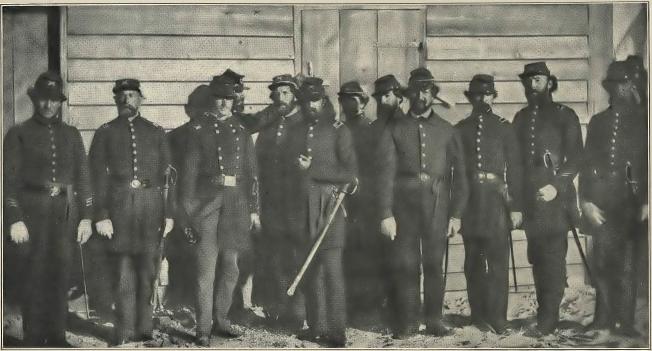
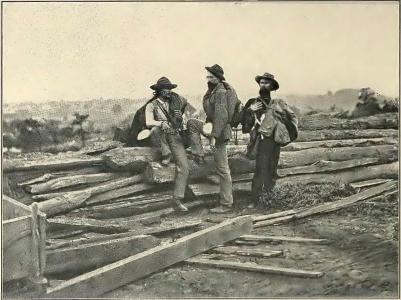
Return to Civil War Statistics[Click on Thumbnails Below for Detailed view and information of that Photograph] |
|||
|
|
|
|
|
![]()
|
Copyright © 2003-2018 Son of the South. Email us at: paul@sonofthesouth.net.
|
|
|
|
Are you Scared and Confused? Click Here to read My Snake Story, a story of hope and encouragement, to help you face your fears. |
||
